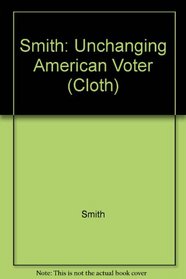Search -
Smith: Unchanging American Voter (Cloth)
Smith Unchanging American Voter - Cloth
Author:
Have the American people grown more politically sophisticated in the past three decades, or do they remain relatively ignorant of the political world? Did a "great leap forward" take place during the 1960s in which our citizenry became involved and adept voters? In this important book, Eric Smith addresses these and other provocative que... more »
Author:
Have the American people grown more politically sophisticated in the past three decades, or do they remain relatively ignorant of the political world? Did a "great leap forward" take place during the 1960s in which our citizenry became involved and adept voters? In this important book, Eric Smith addresses these and other provocative que... more »
ISBN-13: 9780520065260
ISBN-10: 0520065263
Publication Date: 7/1/1992
Pages: 266
Rating: ?
ISBN-10: 0520065263
Publication Date: 7/1/1992
Pages: 266
Rating: ?
0 stars, based on 0 rating
Publisher: University of California Press
Book Type: Hardcover
Members Wishing: 0
Reviews: Amazon | Write a Review
Book Type: Hardcover
Members Wishing: 0
Reviews: Amazon | Write a Review
Genres:
- Politics & Social Sciences >> Politics & Government >> United States >> State
- Politics & Social Sciences >> Politics & Government >> Elections & Political Process >> Elections




